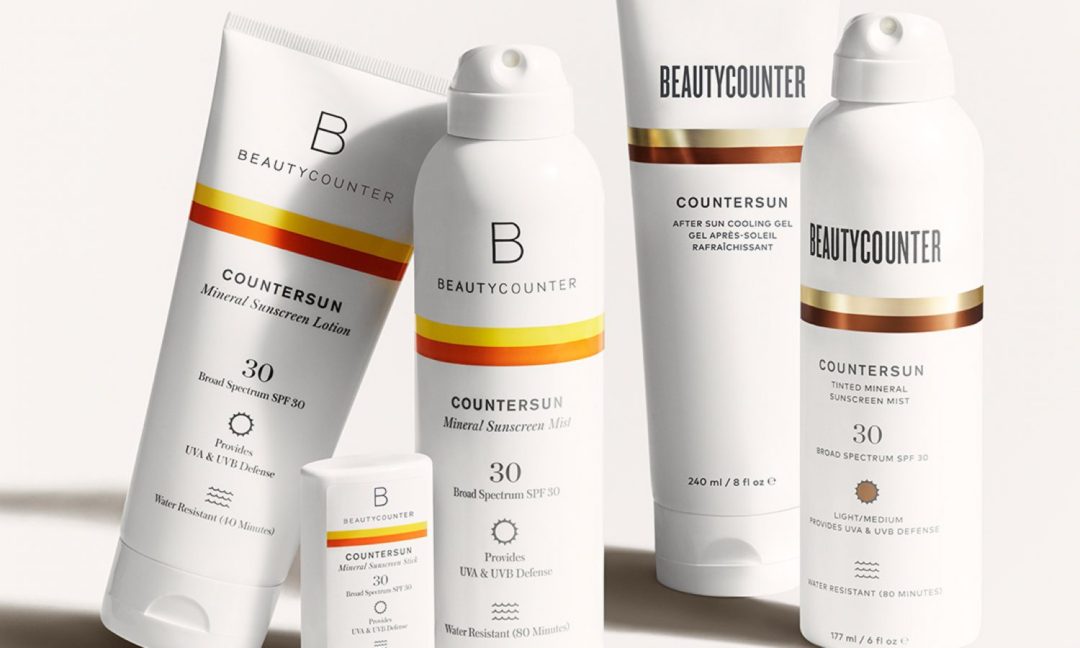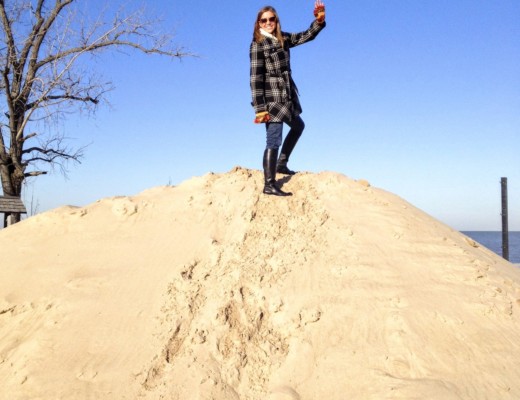With our quarantine summer coming to a close, I wanted to dedicate a post to my latest research rabbit hole in safer skincare: sunscreen.
While mainstream, readily-available sunscreens have a pretty good track record of minimizing risk of skin cancer, they aren’t usually doing us any other favors health-wise. In addition, recent studies have shown that chemicals in many popular sunscreens contribute to the killing of coral reefs. As a lover of this planet and its living creatures, I’m not about that life.
Healthy coral reefs are one of the most valuable ecosystems on Earth. They provide billions of dollars in economic and environmental services, such as food, coastal protection, and tourism. However, coral ecosystems around the world face serious threats from climate change, unsustainable fishing, land-based pollution, coastal development, disease, invasive species and now, chemicals found in sunscreens and other personal health products.
Chemicals found in sunscreens that can harm marine life include: Oxybenzone, Benzophenone-1, Benzophenone-8, OD-PABA, 4-Methylbenzylidene camphor, 3-Benzylidene camphor, nano-Titanium dioxide, nano-Zinc oxide, Octinoxate, Octocrylene. A 2015 study showed that oxybenzone starts causing serious damage to corals at concentrations as low as the equivalent of one drop of water in six-and-a-half Olympic-sized swimming pools [1].
When sunscreen-wearing beachgoers go swimming, they carry these chemicals into the ocean. Oxybenzone and octinoxate also enter marine ecosystems through sewage treatment plant outflows, as they are not usually removed by wastewater treatment systems. Places like Hawaii and Florida have actually passed bills to ban certain sunscreens from being sold in their states due to the growing research on this topic. If this isn’t enough to turn you onto safer sunscreen, I don’t know what is.
Unsure if your sunscreen is safe?
EWG.org/skindeep is my go-to resource to search and learn about the ingredients in my products. Just search for item and see its toxicity rating based on the ingredients. You can then read about why those ingredients aren’t good for you. It’s been a saving grace as I’ve been tossing toxins and revamping my personal care products these past few years. Mineral vs. chemical sunscreens.
Mineral sunscreens are the best alternative to chemical sunscreens. Mineral sunscreens typically feature zinc and titanium dioxide as their active ingredients, rather than the chemicals present in most conventional products. This makes sunscreen cleaner and safer. Mineral sunscreens use these active ingredients to physically block the rays from your skin. As an added bonus, many mineral sunscreens are fragrance-free, which can help you further streamline the dangerous chemicals being absorbed into your body.
Read more about why to avoid fragrances here.
Sunscreen swap.
This was my first summer using any of Beautycounter’s sunscreen products and, per usual, the company did not disappoint. Among Beautycounter’s newest products was the Countersun Daily Sheer Defense for Face with SPF 25, intended for daily wear and to be used under makeup. Other perks:
- It’s lightweight and fast-absorbing, leaving no greasy feeling after application
- Countersun Daily Sheer Defense for Face protects from the sun and electronics (yes, electronics). All Beautycounter Countersun products provide protection from UVA and UVB, but this one also provides protection from HEV blue light rays. So, yes, this sunscreen protects your face from your phone and computer screen. Wild.
- All Countersun products are oxybenzone-free, octinoxate-free and reef-friendly.
- Countersun Daily Sheer Defense for Face is designed to be worn under makeup. It’s thin, lightweight, sheer, and smooth.
Here’s some other mineral sunscreen options that pass the test:
- Coola
- CeraVe
- Badger Sunscreen
- Bare Republic
- Supergoop
- Beautycounter
- Babyganics
- Think Baby
- California Baby
Tips for applying safer mineral sunscreen.
Mineral and chemical sunscreens are quite different, so the risk of user error is high when making this safer switch. Here are some tips if you’re just getting started on your own mineral sunscreen journey.
- Apply and reapply. Sunscreen is not a one and done deal. Even the best sunscreen products need to be reapplied regularly according to the package instructions. I’d apply another layer of protection every one to two hours, reapplying more frequently with excessive sweating or when you spend time in the water. Remember, water resistant is not the same as waterproof.
- Application must be visible. Before rubbing in your sunscreen, make sure its visible on your body. Mineral sunscreen can only do its job if you can actually see where they’ve been applied on your skin. Many 100 percent mineral sunscreen formulas leave behind a white residue, which are mineral actives — zinc oxide and titanium dioxide — making it difficult for them to go on clear. I have not experienced this with Beautycounter.
- Zinc does not expire. As you just learned, zinc is one of the active ingredients in mineral sunscreen and it never expires as a protective agent. This means it will be effective for years after purchase (whoop!). All sun protection products are required by law to list an expiration date, but if you’re using a mineral sunscreen, time isn’t of the essence. If your safer sunscreen stash lasts longer than expected, it will keep working!
- Shake before use. Zinc can settle in the sunscreen’s packaging, so wake it up with a little shake before applying. This will ensure that zinc (ie. your sun protective agent) is distributed evenly every time you lather up, keeping your glow even and your whole body safe.
- Never underestimate the sun. The sun is powerful, and even the best of sunscreens won’t help if we don’t use them properly.
Be careful, choose safe, help save our ecosystem, and have fun in the sun!
[1] NOAA. Skincare Chemicals and Coral Reefs. National Ocean Service website, https://oceanservice.noaa.gov/news/sunscreen-corals.html, 9/30/20.




1 Comment
[…] sunscreens –> any of Beautycounter’s Countersun line. Read more about the the importance of using clean sunscreens here. […]